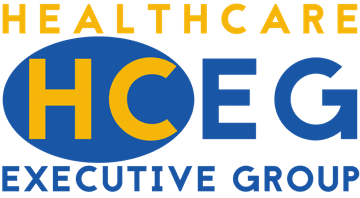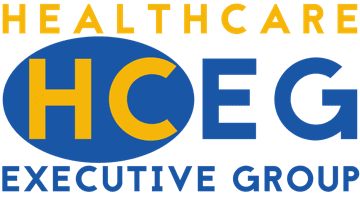Last week’s Health Information Technology Social Media (#HITsm) tweetchat was co-hosted by the Healthcare Executive Group, GuideWell and GuideWell Connect from the 2017 AHIP Institute & Exhibition in Austin, TX.
The theme of the chat was “Health System & Health Plan Innovation, Change & Growth During Uncertain Times” and following six topics were discussed:
T1: What specific ‘areas of opportunity’ must health plans/systems address to improve health outcomes, lower costs & improve equity?
T2: What must health systems & health plans focus on over next 8 to 18 months regardless of health reform outcome?
T3: Who’s most likely to disrupt healthcare: insiders or outsiders? And what barriers do each face – right now or in near future?
T4: What technologies will do the most to move healthcare supply-side toward improving outcomes, lowering costs & enhancing equity?
T5: Incentives drive innovation. How can they be aligned to meaningfully support innovation that improves outcomes & lowers costs?
Bonus: What are examples of innovative healthcare programs, processes, people and organizations – U.S.-based or elsewhere?
Thanks to Hosts & Participants!
Insight, Ideas and Opinions on Topic #1
This post shares insight, ideas and opinions shared by #HITsm chat participants on Topic #1. We’ll share more on the other topics in future blog posts.
T1: What specific ‘areas of opportunity’ must health plans/systems address to improve health outcomes, lower costs & improve equity? #HITsm pic.twitter.com/msqn5FDkyh
— Healthcare Scene (@HealthcareScene) June 9, 2017
Precision Medicine – aka. Personalized Medicine
- Precision medicine (aka ‘personalized medicine) was a hot topic at this week’s #AHIPInstitute in Austin.
- Patients with complex needs require a custom approach. Personalized medicine promises to improve outcomes at lower cost.
- Be excited when we get to the point where #AI effective for health plans. We’re still collectively digging for gold in claims data.
- Implementing positive changes in the healthcare industry that give clinicians the opportunity to view #PatientCare in a new light
- We definitely need this for #UX — the difference b/t changing your bank profile and your payer profile is enormous
Patients, Consumers & Health Plan Members
- It wasn’t that long ago that HC plan leaders were saying “HC plan members aren’t consumers,” LOL
- Addressing the healthcare needs of the #aging population of the country will need to take a seat in the front row
- Taking advantage of the data we are given to visualize the patient condition and identify at-risk patients earlier
- Getting members engaged and empowered in understanding, maintaining, and improving their own health journey
- Consumerism has been making inroads into healthcare, patients are acting like consumers about their healthcare options
- Until patients “get it” health outcomes can only improve so much
Importance of Basic Health Education, Literacy & Preventive Care
- Improving basic health education & literacy through active & coordinated outreach to members & patients is a big opportunity
- Improving education & literacy can be as simple as adopting universal languages so plan members aren’t constantly confused
- More focus to prevention & wellness. Reach patients before they get ill or have a major medical event.
- We need to focus more on prevention – spending too much on too few people – and often late in life.
Customer Relationship Management
- Customer service is an area of opportunity, healthcare needs to accept the change and adapt accordingly
- Before the healthcare industry dives into AI – they should incorporate basic CRM functions into #EHR systems. Huge communication disconnect!
- Addressing the need for clinical decision support and getting the right information available at the right time
Data is Critical to Healthcare
- Challenge w/ personalized medicine starts w/ lack of ability to accurately identify correct patient some crazy % of time…
- And, of course, standardizing data (#interoperability) to encourage cooperation between all #healthcare entities
- Systems that can use unstructured data to inform decisions. AI and machine learning?
- Real-time data sharing, especially clinical data, with providers and especially patients
- Absolutely! RTI approach needs to be incorporated from data driven perspective
- Systems need 2 embrace outcome-driven & SDOH/BDOH-driven ops to lower costs & affect outcomes. Walk the walk; we’ve heard the talk
The Importance of Home & Social Determinants of Health
- Health data taken from the home of the patient using this technology can be shown to doctors for perhaps better, tailored care
- Another area to take advantage of is using technology to bring healthcare to the home of patients.
- It is the space between heart beats where we live – IE not an “area” but care coordination between areas and with patients
Quality Measures & Measuring Outcomes
- How about better assessment & collection of what matters to members/patients? Instead of fancy analytics from quants?
- How do we measure feelings and happiness? Or are outcomes more quantifiable?
- System wide outcome driven treatment and outcome measures to tailor individual client centered care. Educate for prevention
- Analytics allows for effective clinical assessments by providing better patient outcomes
- We’re trying to do this now, in way, with HCAHPS/CAHPS, right? Don’t believe currently effective, but CAN be quantified.
- Do you see a worthwhile set of quality measures worth aligning to?
- Great idea: patient-centric measures. What outcomes do patients/members want to achieve, and what data do we need to drive them?
- We do this in OT for quality of life/ perceived ‘happiness’ with what is most valuable. All valid reliable and evidence based measure
Look for More on the Other Topics in Following Posts
Check back for more insight, ideas and opinions from the #HITsm chat. Thanks again to John Lynn and our co-hosts @_GWConnect and @_GuideWell and all those who participated in the chat. A complete transcript of the chat can be found here. You can also follow @HCExecGroup to learn more about opportunities, challenges, and issues impacting healthcare plans, health systems and payers.




